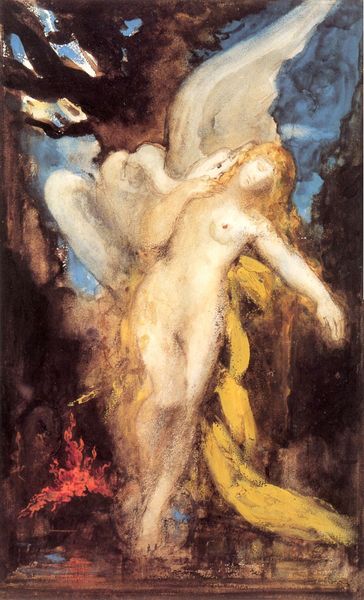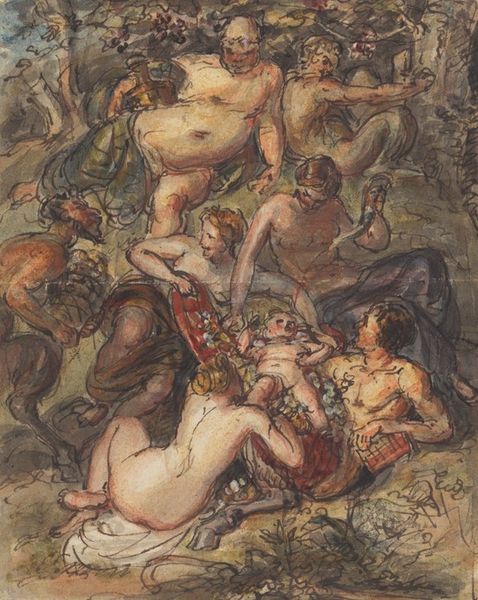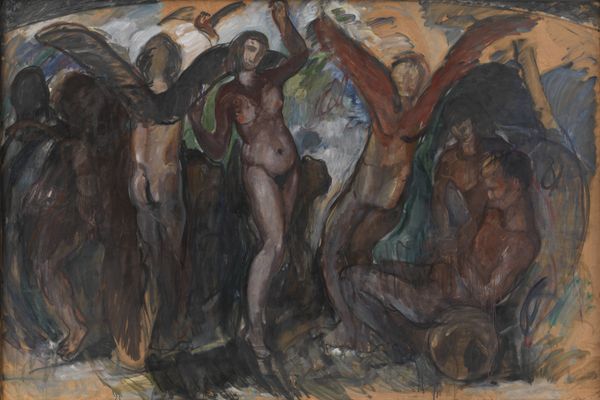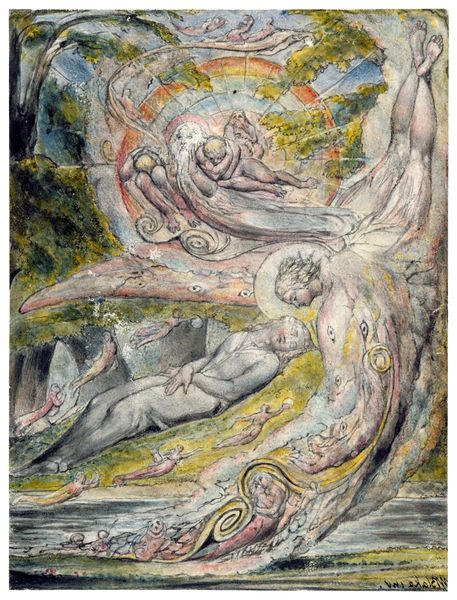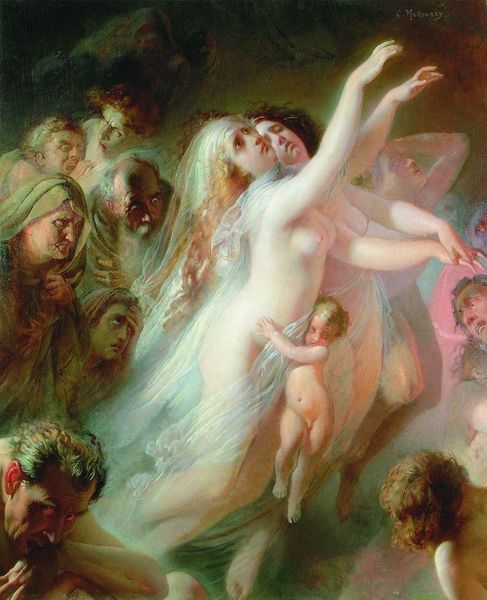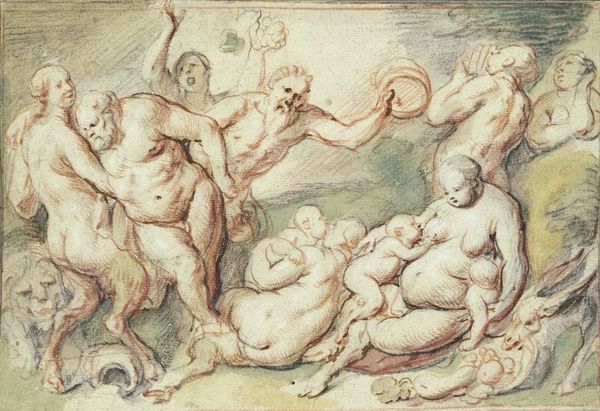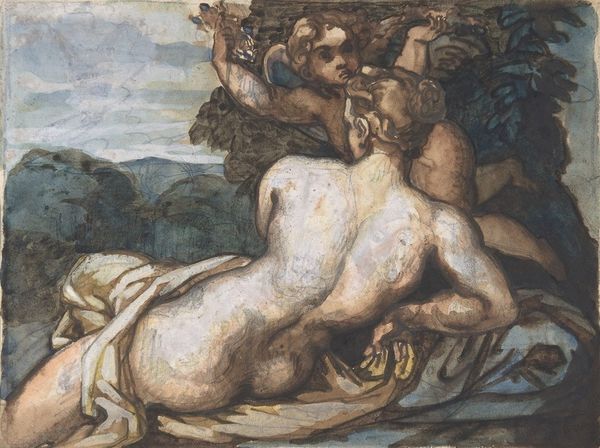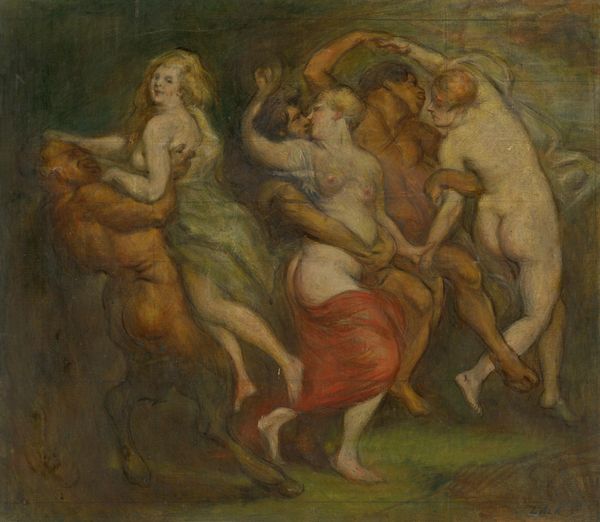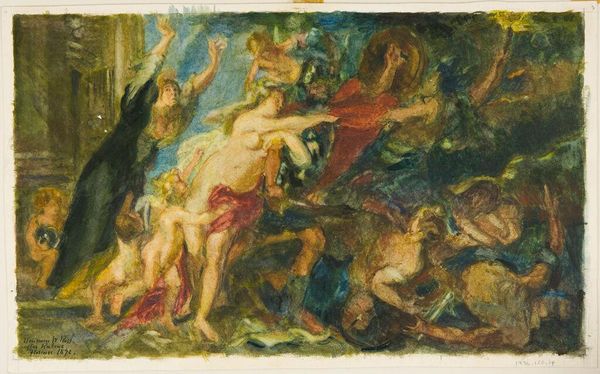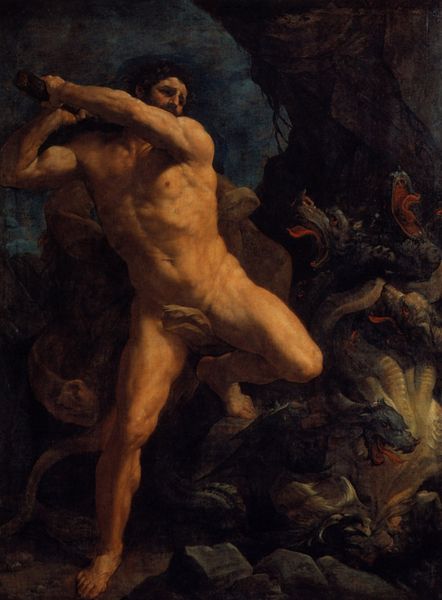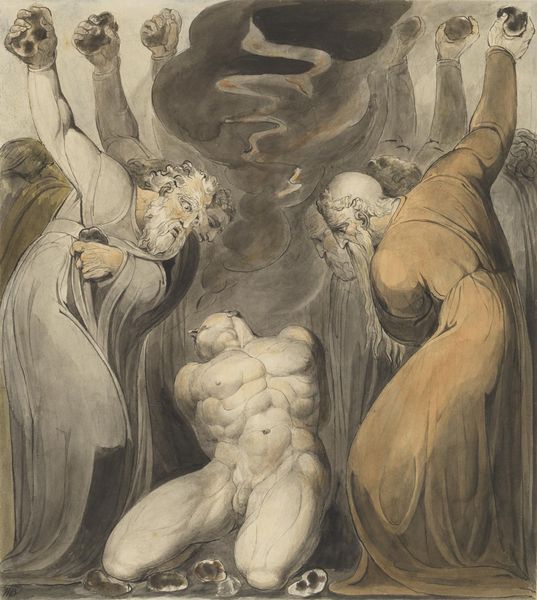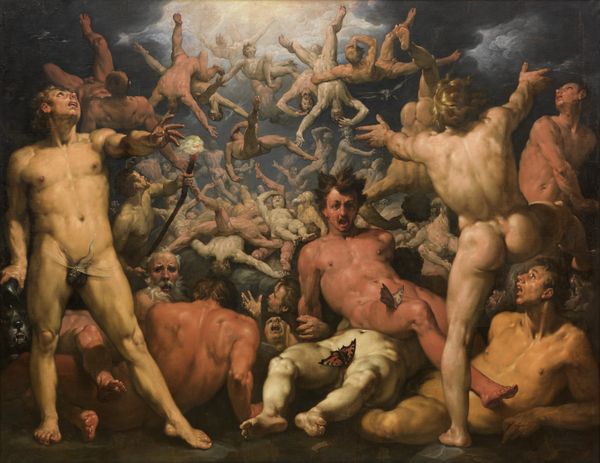
Dimensions: support: 762 x 1016 mm
Copyright: © The estate of Leslie Hurry | CC-BY-NC-ND 4.0 DEED, Photo: Tate
Curator: Here we have Leslie Hurry's "This Extraordinary Year, 1945," a painting held in the Tate Collections. It's an oil on canvas, just over a meter wide. Editor: Wow, it's like a fever dream. All these bodies, a figure striding forward... there's a chaotic energy, but also something…hopeful? Curator: Indeed. Hurry painted this at the end of the Second World War. Considering the socio-political landscape of the time, it’s tempting to read the central figure as an allegory for liberation or the dawn of a new era. Editor: The almost grotesque figures surrounding her though... they are unnerving, their faces contorted with pain and suffering. It is like the trauma of war made visible. Curator: And yet, note how Hurry employs a vibrant palette, even amidst the darkness. This is where we find the intersection of trauma and resilience. Editor: It feels like a mirror reflecting the collective psyche of a world emerging from destruction. I am still trying to reconcile the darkness with the promise of a new dawn. Curator: I agree. The ambiguity is what makes it so compelling. It refuses easy answers.
Comments
tate 6 months ago
⋮
http://www.tate.org.uk/art/artworks/hurry-this-extraordinary-year-1945-t11748
Join the conversation
Join millions of artists and users on Artera today and experience the ultimate creative platform.
tate 6 months ago
⋮
Leslie Hurry was a neo-Romantic, whose fantasies were first expressed in unique illustrated books. His linear style, non-naturalistic colours and etiolated figures were well suited to the creation of a haunting, almost macabre vision that seems to derive from an inner world of the imagination. He first came to public attention during the Second World War with designs for the sets and costumes of Hamlet (1942), Robert Helpmann’s dramatic ballet that sought to express the final thoughts of the dying Prince through dance. Helpmann (1909–86), a dancer himself, wanted the action to take place in a decadent palace that would dwarf the actors on stage: Hurry’s elaborate and powerful backdrop anticipates 1945: This Extraordinary Year in its rich and fiery colours, claustrophobic space, and sense of contained energy that emanates from a surface filled with incident and densely-packed figures.
